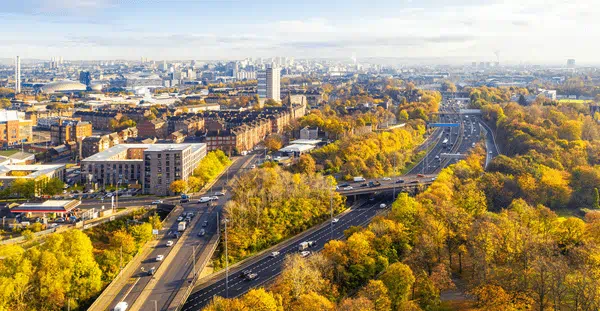- Placemaking
- Cities
- Urbanisation
- Resilience
- Government
As our town centres gradually spring back to life after lockdown, one of the most noticeable differences is the newfound importance of space. Public realm – our streets, squares, parks and public open spaces - have sometimes felt forgotten when it comes to the development of our town centres. Public spaces are often squeezed in a bid to capture the most value from buildings, but in a post-COVID world that equation is likely to change. So with ‘social distancing’ now firmly embedded in our daily lexicon, how can the true value of public realm be realised?
A concrete jungle
As council budgets have been progressively tightened over the last decade, low-maintenance and/or low-cost have often been the first considerations when it comes to public realm. This has led to an increase in uninspiring, poorly maintained and less desirable tarmacked spaces in the heart of our towns and along our high streets.
These are the very places that we now wish could be more open and attractive, providing a safe and welcoming experience. They should be places where people want to spend their time, not only to support the economy, but also for the associated health and wellbeing benefits they bring.
Value not cost
Open spaces in great places create value, rather than drain it. In a post-COVID world it is already apparent that public realm is more valued than ever and, from transformational projects like Kings Cross Granary Square and Canal Basin to the public realm delivered as part of the London Bridge Station redevelopment, it is easy to find examples of spaces that have been reclaimed for people. But investing in these spaces has always been hard.
Our work on Bradford City Park is another example where significant new investment in public realm has been the catalyst for wider transformation and, in turn, economic growth. We need to focus on this value, measure it, demonstrate it and capture it. This will enable investment that will ultimately underpin economic recovery, support ongoing maintenance and drive demand for events that can help to fill these public spaces.
Multi-faceted public space
Public realm is not just ‘leftover space’; it is the glue that holds a place together - from the way we navigate it, to informing our experience of it. Too often we forget this at our peril, and design or treat public realm as a single thing – merely the route from one place to another, or ‘just’ a square to spend time in.
The reality is that high-quality public realm is all these things and more. Like the classic French town or village square it is the very heart of a place, and in larger towns it should also be the veins, arteries and lungs. It defines the journey we take as we move around a town or high street and – consciously or subconsciously - it creates perceptions of the places where we spend our time. Is somewhere easy to navigate? Can I find my way around? Will I enjoy spending more time here?
The future of public realm
Contrary to the common perception that public realm is left until last or - even worse - is an afterthought to ‘fill in the gaps’, perhaps now is the time for public realm to be prioritised. In putting it at the forefront of how we shape or transform town centres and high streets, we have an opportunity to create more liveable places. Places in which:
As with so many facets of our town centres or high streets it will undoubtedly be local authorities who will have to lead the charge. They will need to be a guiding hand and shape the public realm, but they cannot do this alone. Articulating the value that can be created through investment in public realm will help to create opportunities to capture that value, so that it can be reinvested in maintaining liveable places for the long term.




